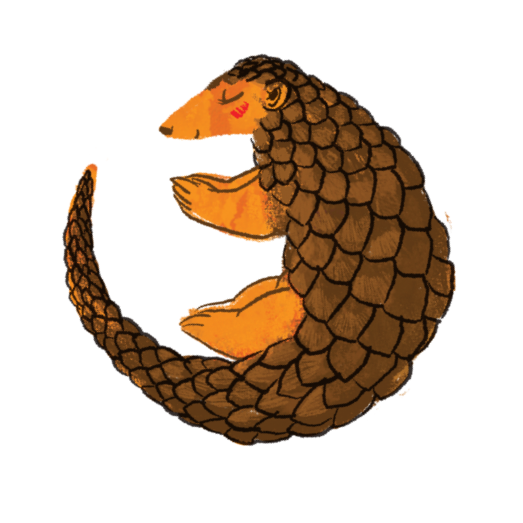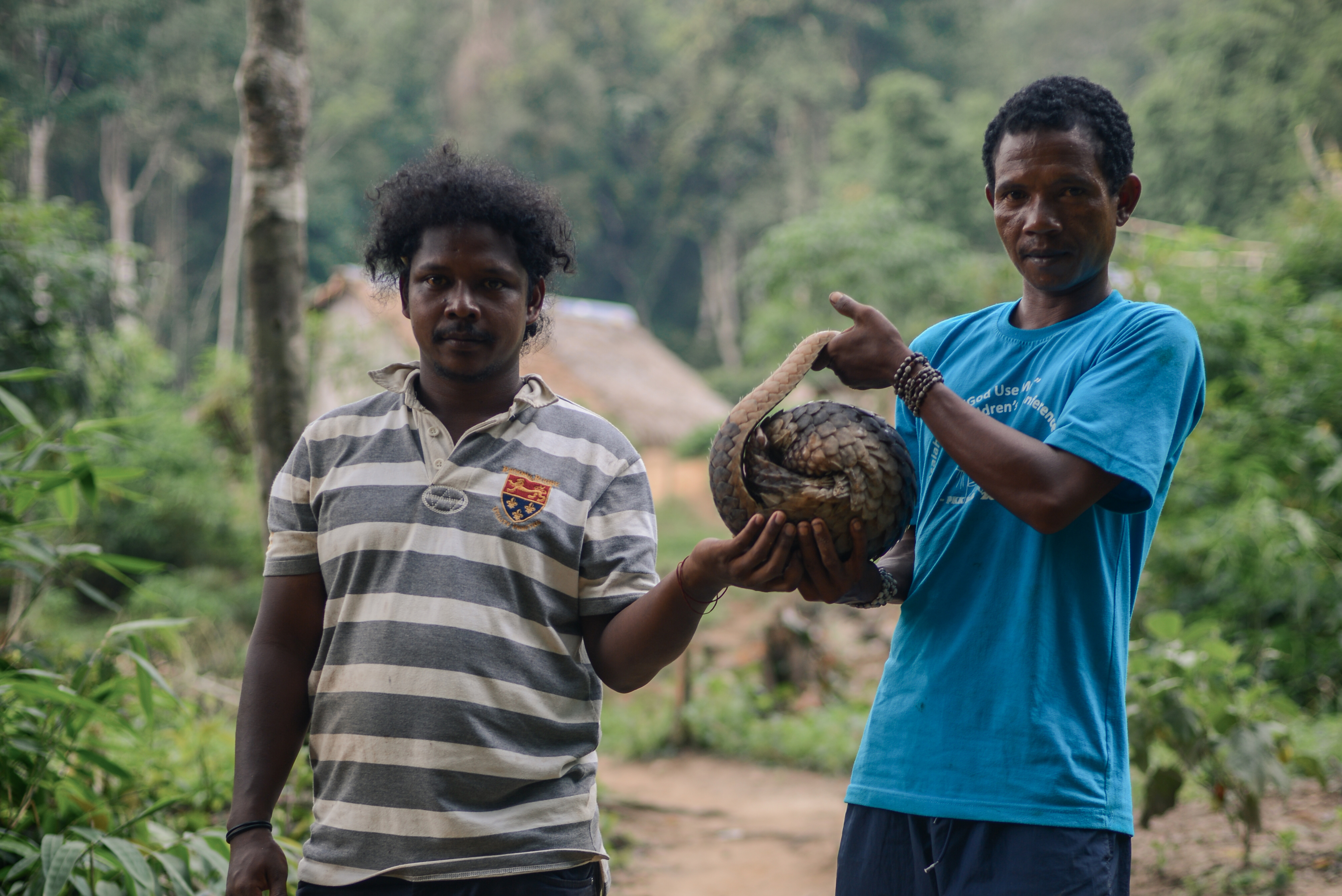


he pangolin lies curled up on the sand, next to the brook where villagers wash and bathe. “Can we name it?” we ask. The question perplexes Anjang for a moment. I imagine, to him, it would be similar to us naming a chicken at a slaughterhouse.
Just yesterday, the village’s hunters had tracked this pangolin to its resting place at the top of a tree, after spotting its footprints ambling across the old logging road that runs near their village.
If you follow that logging road, bump and skid for another half hour or so, you would come to the site where the villagers had bravely set up a blockade to stop logging trucks from passing through their traditional land bringing timber to wherever the demand is. Their efforts were met with bulldozers and chainsaws brought by logging company representatives and Forestry Department officials. It was a crash of machinery against a tiny pile of bamboo and branches.
WATCH: The Orang Asli blockade by the Temiar people of Perak
The state insisted that the land belonged to the state and the logging concessions were legal. Three times the blockade was torn down, and on the third demolition three Temiars were arrested and charged under Section 341 of the penal code, for “wrongful restraint”, likely referring to their obstruction of the logging company’s vehicles.
But, for now, that is a distant memory. Now, they have a pangolin.
Fendi – the hunter who spotted the tracks, climbed up a tree, hacked off the interfering branches, and finally tossed the pangolin down to the waiting entourage – is the hero today. He has found livelihood.
We ask them what they would usually do to the pangolins they catch.
“Sell to the towkay,” says one with a wave of his hand. “We take it out immediately and sell it.”
“That’s if we want to sell it,” says another. “If we choose to eat it, then we ask the elders (for permission).”
“And we have to share it (with everyone in the village). If we don’t share, that is the most dangerous problem. That is the heaviest taboo,” he continues.
The Temiars call this taboo against selfishness in food “genhak”, a taboo echoed in the traditions of many other indigenous groups in Peninsular Malaysia.
“For us Temiars, we have to share completely,” says Ramli. “If one of our friends is left out, that friend will die, this is what we call genhak.”
“It’s like a sickness, like a curse.” Anjang nods solemnly next to him. “Like a regret, but it will lead to death.”
This time, they decide to release the pangolin back into the forest, after allowing us a few photos. We are advised not to joke or laugh too much. Above us, the sky turns heavy with rain. A wind rustles through the forest. The stream beside tumbles urgently. And beneath it all the earth watches, immutable.
Is it easy to find pangolins? “No,” says Anjang. “They are becoming less, the land is not suitable to stay anymore, because it’s always being developed, finished. In the past, in this area, before the plantations and all that, there were a lot of them!” he exclaims, pointing at the pangolin. “A lot!”
We are finally satisfied with the shots, and find ourselves apologising to the pangolin. As the hunters gather it up and head into the forest, Anjang watches, pensive.
“When I see them, sometimes I think they are like us. Nowhere to go.”
The moment the pangolin clambers into the forest, the rain pours down. So we name her Rainie.

The pangolin lies curled up on the sand, next to the brook where villagers wash and bathe. “Can we name it?” we ask. The question perplexes Anjang for a moment. I imagine, to him, it would be similar to us naming a chicken at a slaughterhouse.
Just yesterday, the village’s hunters had tracked this pangolin to its resting place at the top of a tree, after spotting its footprints ambling across the old logging road that runs near their village.
If you follow that logging road, bump and skid for another half hour or so, you would come to the site where the villagers had bravely set up a blockade to stop logging trucks from passing through their traditional land bringing timber to wherever the demand is. Their efforts were met with bulldozers and chainsaws brought by logging company representatives and Forestry Department officials. It was a crash of machinery against a tiny pile of bamboo and branches.
WATCH: The Orang Asli blockade by the Temiar people of Perak
The state insisted that the land belonged to the state and the logging concessions were legal. Three times the blockade was torn down, and on the third demolition three Temiars were arrested and charged under Section 341 of the penal code, for “wrongful restraint”, likely referring to their obstruction of the logging company’s vehicles.
But, for now, that is a distant memory. Now, they have a pangolin.
Fendi – the hunter who spotted the tracks, climbed up a tree, hacked off the interfering branches, and finally tossed the pangolin down to the waiting entourage – is the hero today. He has found livelihood.


We ask them what they would usually do to the pangolins they catch.
“Sell to the towkay,” says one with a wave of his hand. “We take it out immediately and sell it.”
“That’s if we want to sell it,” says another. “If we choose to eat it, then we ask the elders (for permission).”
“And we have to share it (with everyone in the village). If we don’t share, that is the most dangerous problem. That is the heaviest taboo,” he continues.
The Temiars call this taboo against selfishness in food “genhak”, a taboo echoed in the traditions of many other indigenous groups in Peninsular Malaysia.
“For us Temiars, we have to share completely,” says Ramli. “If one of our friends is left out, that friend will die, this is what we call genhak.”
“It’s like a sickness, like a curse.” Anjang nods solemnly next to him. “Like a regret, but it will lead to death.”
This time, they decide to release the pangolin back into the forest, after allowing us a few photos. We are advised not to joke or laugh too much. Above us, the sky turns heavy with rain. A wind rustles through the forest. The stream beside tumbles urgently. And beneath it all the earth watches, immutable.
Is it easy to find pangolins? “No,” says Anjang. “They are becoming less, the land is not suitable to stay anymore, because it’s always being developed, finished. In the past, in this area, before the plantations and all that, there were a lot of them!” he exclaims, pointing at the pangolin. “A lot!”
We are finally satisfied with the shots, and find ourselves apologising to the pangolin. As the hunters gather it up and head into the forest, Anjang watches, pensive.
“When I see them, sometimes I think they are like us. Nowhere to go.”
The moment the pangolin clambers into the forest, the rain pours down. So we name her Rainie.